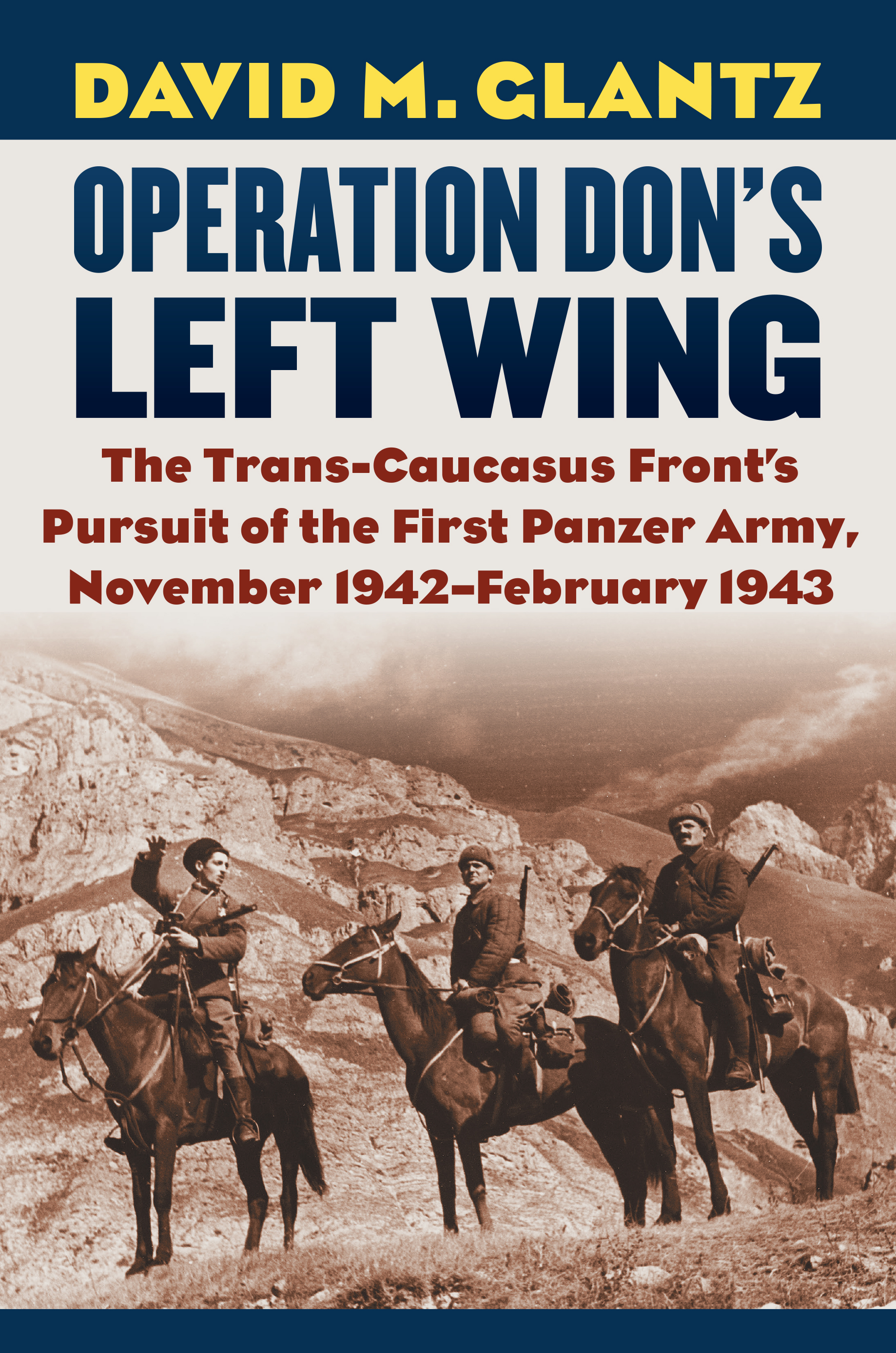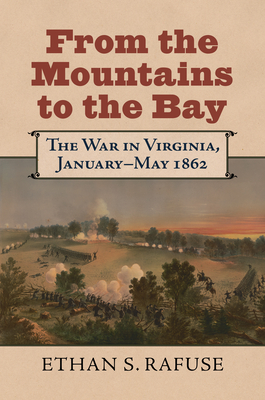
Part of Series
On 1 January 1943, with German Sixth Army about to be destroyed in the Stalingrad pocket, the Stavka (Soviet High Command) launched Operation Don, a strategic offensive conducted by the Red Army's Southern, Southwestern, and Trans-Caucasus Fronts aimed at demolishing German defenses in the southern Soviet Union and decisively turning the war's tide. Critical to this ambitious operation was the mission assigned to the Trans-Caucasus Front—to isolate and destroy German Army Group A in the northern Caucasus region in cooperation with the Southern Front. Operation Don's Left Wing is the first detailed study of this crucial but virtually overlooked Soviet military operation. Because of the priority given to the assault on German Sixth Army at Stalingrad, the Red Army Southwestern, Southern, and Trans-Caucasus Fronts were compelled to execute their missions with scant resources—inadequate logistical support, personnel replacements, and reinforcing equipment. Based on newly released Red Army archival operational documents, David M. Glantz constructs a clear, comprehensive account of how, despite such constraints, the Trans-Caucasus Front nonetheless pursued and severely damaged German First Panzer Army—although it failed to encircle and destroy the panzer army as hoped. These documents include candid daily orders and reports, periodic situation maps, a full array of ever-changing operational plans, and strength and casualty reports prepared by Soviet formations and units throughout the offensive. With unprecedented access to these documents, Glantz delves into previously forbidden topics such as unit strengths and losses and the foibles and attitudes of commanders at every level. Following Glantz's Operation Don's Main Attack, this documentary study expands our understanding of a pivotal operation in the Soviet triumph over Nazi Germany and a decisive moment in the history of World War II on the Eastern Front.
Author

David M. Glantz is an American military historian and the editor of The Journal of Slavic Military Studies. Glantz received degrees in history from the Virginia Military Institute and the University of North Carolina at Chapel Hill, and is a graduate of the U.S. Army Command and General Staff College, Defense Language Institute, Institute for Russian and Eastern European Studies, and U.S. Army War College. He entered active service with the United States Army in 1963. He began his military career in 1963 as a field artillery officer from 1965 to 1969, and served in various assignments in the United States, and in Vietnam during the Vietnam War with the II Field Force Fire Support Coordination Element (FSCE) at the Plantation in Long Binh. After teaching history at the United States Military Academy from 1969 through 1973, he completed the army’s Soviet foreign area specialist program and became chief of Estimates in US Army Europe’s Office of the Deputy Chief of Staff for Intelligence (USAREUR ODCSI) from 1977 to 1979. Upon his return to the United States in 1979, he became chief of research at the Army’s newly-formed Combat Studies Institute (CSI) at Fort Leavenworth, Kansas, from 1979 to 1983 and then Director of Soviet Army Operations at the Center for Land Warfare, U.S. Army War College in Carlisle, Pennsylvania, from 1983 to 1986. While at the College, Col. Glantz was instrumental in conducting the annual "Art of War" symposia which produced the best analysis of the conduct of operations on the Eastern Front during the Second World War in English to date. The symposia included attendance of a number of former German participants in the operations, and resulted in publication of the seminal transcripts of proceedings. Returning to Fort Leavenworth in 1986, he helped found and later directed the U.S. Army’s Soviet (later Foreign) Military Studies Office (FMSO), where he remained until his retirement in 1993 with the rank of Colonel. In 1993, while at FMSO, he established The Journal of Slavic Military Studies, a scholarly journal for which he still serves as chief editor, that covers military affairs in the states of Central and Eastern Europe as well as the former Soviet Union. A member of the Russian Federation’s Academy of Natural Sciences, he has written or co-authored more than twenty commercially published books, over sixty self-published studies and atlases, and over one hundred articles dealing with the history of the Red (Soviet) Army, Soviet military strategy, operational art, and tactics, Soviet airborne operations, intelligence, and deception, and other topics related to World War II. In recognition of his work, he has received several awards, including the Society of Military History’s prestigious Samuel Eliot Morrison Prize for his contributions to the study of military history. Glantz is regarded by many as one of the best western military historians of the Soviet role in World War II.[1] He is perhaps most associated with the thesis that World War II Soviet military history has been prejudiced in the West by its over-reliance on German oral and printed sources, without being balanced by a similar examination of Soviet source material. A more complete version of this thesis can be found in his paper “The Failures of Historiography: Forgotten Battles of the German-Soviet War (1941-1945).” Despite his acknowledged expertise, Glantz has occasionally been criticized for his stylistic choices, such as inventing specific thoughts and feelings of historical figures without reference to documented sources. Glantz is also known as an opponent of Viktor Suvorov's thesis, which he endeavored to rebut with the book Stumbling Colossus. He lives with his wife Mary Ann Glantz in Carlisle, Pennsylvania. The Glantzes' daughter Mary E. Glantz, also a historian, has written FDR And The Soviet Union: The President's Battles Over Forei


